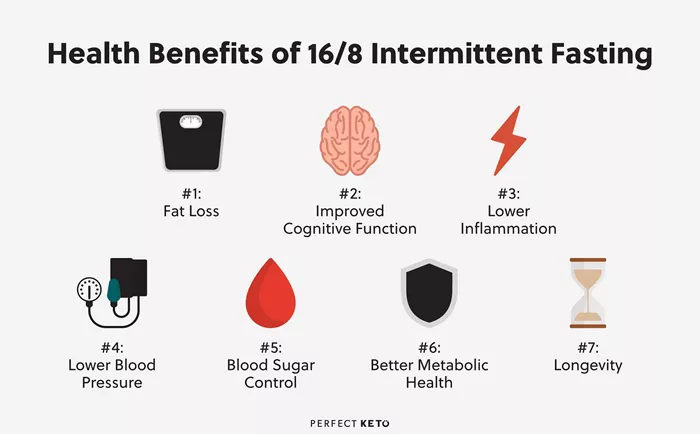Moisturizers are essential for keeping the skin healthy and vibrant. They help hydrate the skin, prevent moisture loss, and enhance the skin’s overall texture and appearance. With so many options available on the market, selecting the right moisturizer can be overwhelming. In this article, we will explore the key factors to consider when choosing a moisturizer, providing you with the knowledge needed to make an informed decision. How to choose good skin care moisturizers? We will guide you through the process of identifying the best products for your skin’s unique needs.
Understanding the Skin’s Barrier and the Need for Moisturization
The skin is the body’s largest organ and serves as a protective barrier against external factors such as pollutants, UV radiation, and pathogens. The outermost layer of the skin, known as the stratum corneum, is composed of dead skin cells and lipids. These lipids, including ceramides, cholesterol, and fatty acids, form a lipid bilayer that helps to retain moisture within the skin.
When the skin’s barrier function is compromised, either due to environmental stressors, aging, or improper skincare, water loss occurs more rapidly, leading to dryness, flakiness, and a dull complexion. Moisturizers work by replenishing the skin’s moisture content and strengthening the skin’s barrier.
Types of Moisturizers
Humectants:
Humectants are substances that attract and bind water molecules. They draw moisture from the environment and from the deeper layers of the skin to the surface. Common humectants include glycerin, hyaluronic acid, and sorbitol. Glycerin is a popular ingredient as it is effective in hydrating the skin and is suitable for most skin types. Hyaluronic acid has the unique ability to hold a large amount of water, making it excellent for plumping the skin and reducing the appearance of fine lines. For example, a moisturizer with a high concentration of hyaluronic acid can provide intense hydration and give the skin a more youthful and supple look.
Emollients:
Emollients work by filling in the gaps between the skin cells and smoothing the skin’s surface. They soften and soothe the skin, making it feel more comfortable. Examples of emollients are oils such as jojoba oil, almond oil, and mineral oil. Jojoba oil is similar in structure to the skin’s natural sebum, making it easily absorbed and non-greasy. It helps to improve the skin’s elasticity and can be beneficial for both dry and combination skin types. Almond oil is rich in vitamins A and E, which have antioxidant properties and can help protect the skin from free radical damage while providing emollient effects.
Occlusives:
Occlusives form a protective layer on the skin’s surface, preventing water evaporation. Petrolatum and lanolin are well-known occlusive agents. Petrolatum creates a thick, waterproof barrier that seals in moisture. However, it can feel heavy on the skin and may not be suitable for those with oily or acne-prone skin. Lanolin, derived from sheep’s wool, is a natural occlusive that is also rich in fatty acids and cholesterol, which can help repair the skin’s barrier. It is often used in products for dry and sensitive skin.
Ingredients to Look for in a Good Moisturizer
Antioxidants:
Antioxidants are essential for protecting the skin from oxidative stress caused by free radicals. Free radicals are unstable molecules that can damage the skin’s cells and contribute to premature aging, wrinkles, and skin diseases. Vitamins C and E are powerful antioxidants. Vitamin C not only protects the skin but also helps in collagen synthesis, brightening the skin tone. A moisturizer with vitamin C can fade dark spots and even out the complexion. Vitamin E works in conjunction with vitamin C, enhancing its antioxidant effect and protecting the skin’s lipid layer.
Ceramides:
As mentioned earlier, ceramides are a key component of the skin’s lipid barrier. Including ceramides in a moisturizer can help repair and strengthen the skin’s barrier function. They prevent water loss and improve the skin’s ability to retain moisture. For example, a moisturizer with a blend of ceramides can be highly beneficial for those with dry or sensitive skin, as it helps to restore the skin’s natural protective layer.
Peptides:
Peptides are short chains of amino acids that can have various effects on the skin. Some peptides can stimulate collagen production, which is important for maintaining the skin’s firmness and elasticity. They can also help in reducing the appearance of wrinkles and fine lines. A moisturizer containing peptides can provide anti-aging benefits and give the skin a more lifted and toned appearance.
Different Skin Types and Suitable Moisturizers
Dry Skin:
Dry skin lacks sufficient moisture and often feels tight and rough. For dry skin, a rich, creamy moisturizer with a combination of humectants, emollients, and occlusives is ideal. Look for products that contain high levels of glycerin, hyaluronic acid, shea butter, and ceramides. A moisturizer like Cetaphil Moisturizing Cream is a good option as it provides long-lasting hydration and helps to repair the skin’s barrier. It contains petrolatum as an occlusive, glycerin as a humectant, and other emollient ingredients to soothe and hydrate dry skin.
Oily Skin:
Oily skin produces excess sebum, which can make the skin appear shiny and prone to clogged pores and acne. However, oily skin still needs hydration. A lightweight, water-based moisturizer with humectants like hyaluronic acid and a minimal amount of oil is suitable. Gel-based moisturizers are often a good choice for oily skin. For instance, Neutrogena Hydro Boost Water Gel contains hyaluronic acid and is oil-free. It provides hydration without adding extra greasiness and helps to balance the skin’s moisture levels.
Combination Skin:
Combination skin is characterized by having both dry and oily areas. A moisturizer that can hydrate the dry areas while not making the oily areas worse is needed. Look for a lotion or cream that is lightweight and contains a balance of humectants and emollients. A product like La Roche-Posay Toleriane Double Repair Face Moisturizer is formulated to work well on combination skin. It has glycerin and ceramides to hydrate and repair the skin, and its lightweight texture makes it suitable for both the dry cheeks and the oilier T-zone.
Sensitive Skin:
Sensitive skin is easily irritated by certain ingredients and environmental factors. A fragrance-free, hypoallergenic moisturizer with soothing ingredients is recommended. Ingredients such as aloe vera, chamomile, and ceramides are beneficial. Aveeno Ultra-Calming Daily Moisturizer is designed for sensitive skin. It contains feverfew, which helps to calm irritated skin, and ceramides to strengthen the skin’s barrier.
How to Apply Moisturizer for Optimal Results
Cleanse the Skin First:
Before applying moisturizer, it is important to cleanse the skin to remove dirt, makeup, and excess oil. Use a gentle cleanser that is suitable for your skin type. For example, if you have dry skin, a creamy, non-foaming cleanser is preferable, while those with oily skin may benefit from a foaming cleanser.
Tone the Skin (Optional):
Using a toner can help to balance the skin’s pH and prepare it for better absorption of the moisturizer. However, it is not a necessary step for everyone. If you choose to use a toner, make sure it is alcohol-free and formulated for your skin type.
Apply the Moisturizer:
Take a small amount of moisturizer, about a pea-sized for the face, and dot it on different areas of the face such as the forehead, cheeks, nose, and chin. Then, using gentle upward and outward motions, massage the moisturizer into the skin until it is fully absorbed. Pay extra attention to areas that are prone to dryness, such as the cheeks and around the eyes. For the neck and décolletage, also apply moisturizer in an upward motion to help prevent sagging.
The Importance of Sun Protection in Conjunction with Moisturization
Even the best moisturizer may not be sufficient to maintain healthy skin if sun protection is overlooked. UV radiation from the sun can cause significant damage to the skin, including premature aging, sunburn, and an increased risk of skin cancer. Many moisturizers now come with added sun protection in the form of SPF. However, if the moisturizer you choose does not have SPF, it is essential to apply a separate sunscreen after moisturizing. Look for a broad-spectrum sunscreen with an SPF of at least 30 and apply it generously to all exposed areas of the skin.
Conclusion
In conclusion, the best skin care moisturizer depends on various factors including your skin type, specific skin concerns, and personal preferences. Understanding the different types of moisturizers, key ingredients, and how to apply them correctly can help you select a product that will keep your skin hydrated, healthy, and looking its best. Whether you have dry, oily, combination, or sensitive skin, there is a moisturizer out there that can meet your needs and enhance your skincare routine. Regular use of a suitable moisturizer, along with proper sun protection, is a fundamental step in achieving and maintaining beautiful skin.
Related topics:
Can You Use Advanced Night Repair as a Moisturizer?



































